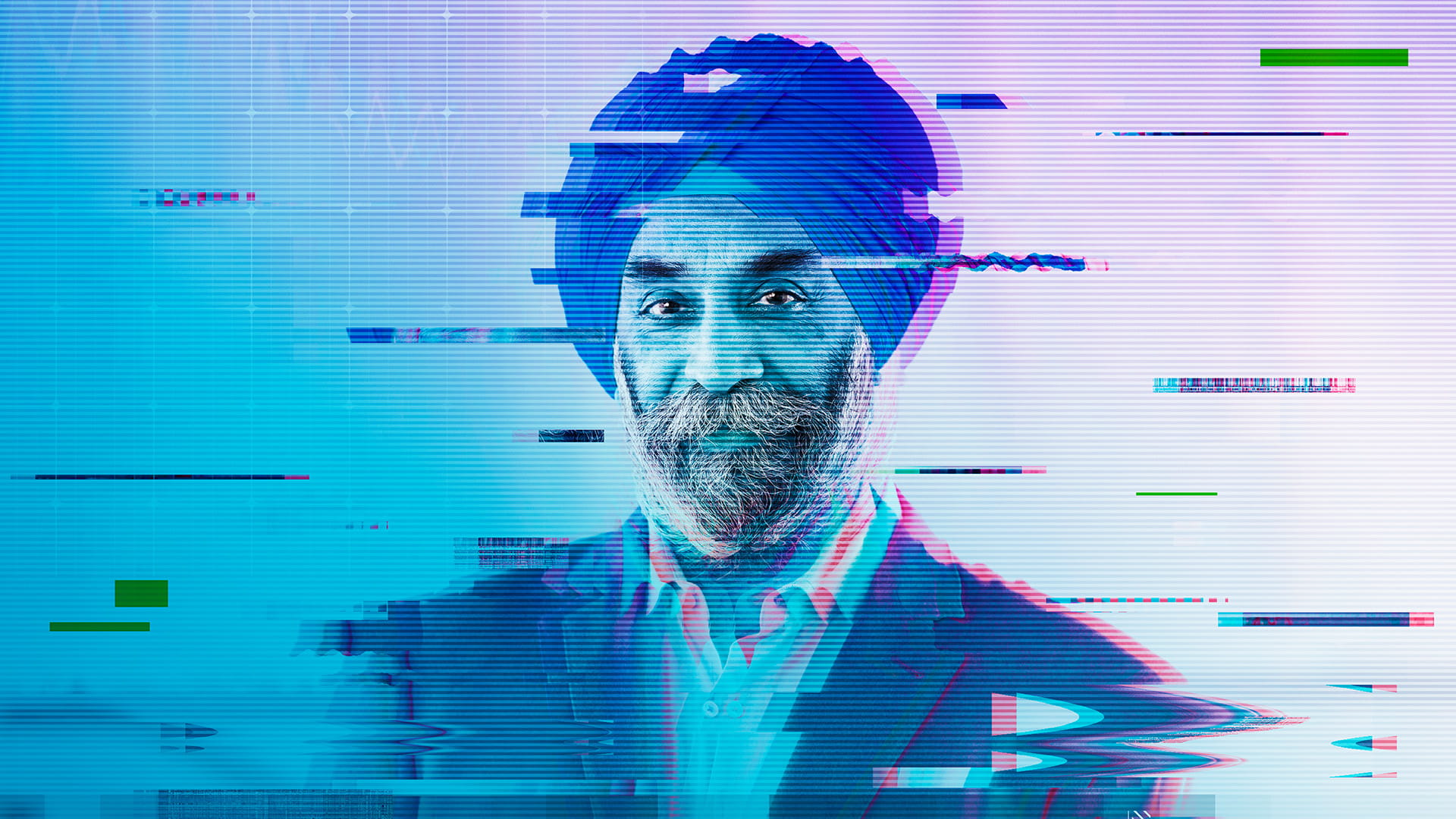ChatGPT. Bing. Bard. Claude. DALL-E. Stable Diffusion. Midjourney. From Amazon’s Bedrock to Meta’s LLaMA, artificial intelligence technology suddenly seems to be everywhere. After decades of quietly percolating behind the scenes in computer science and engineering labs worldwide, dozens of promising new automation and machine-learning technologies have seemingly exploded into the mainstream consciousness overnight.
The generative AI market is expected to skyrocket from $42.6 billion in 2023 to $98.1 billion by 2026, according to research by PitchBook, and the corporate world is taking note. Enter a rising tidal wave of both consumer- and enterprise-grade AI services and solutions — many of which are likely to drive significant leaps in both revenue and business. Fortunately for senior leaders, whose heads may be spinning from all this rapid high-tech advancement (and an endless sea of acronyms), there’s no need to sweat. A new Executive Education course taught by Mohan Sawhney, associate dean for digital innovation and the McCormick Foundation Professor of Technology at the Kellogg School of Management, aims to demystify these tools.
The course, Generative AI: Executive Strategies to Unlock Enterprise Value, is designed to help senior leaders get up to speed on deploying cutting-edge AI to automate critical tasks, re-imagine day-to-day operations and redefine competitive advantage. But participants, who don’t need any programming experience to enroll, will learn just as much about change management and workforce transformation.
AI-powered technology is already surging at a 34.6% compound annual growth rate, according to Grand View Research Inc., and executive leaders are scrambling to get their heads around this technology’s potential to enhance growth and performance at scale.
We sat down with Sawhney — a globally recognized authority on innovation and technology and co-author of “The Sentient Enterprise: The Evolution of Business Decision Making,” a Wall Street Journal bestseller — to find out more about the next industrial revolution and why the commercial world now stands at a critical inflection point.
KELLOGG: While artificial intelligence is quickly taking over the headlines, its particulars may not be familiar to many nontechnical readers. How would you define generative AI exactly?
MOHAN SAWHNEY: It’s a subset of artificial intelligence that generates new content. This content could be text, images or speech. What’s unique is that it generates something never seen before — blog posts, document summaries, images or software code, among other items. Essentially, AI can be used in any human interaction with a machine.
KELLOGG: Why is this technology suddenly taking the world by storm?
SAWHNEY: AI technology has been around a long time, actually — the term was first defined in 1956 at a Dartmouth University conference. Machine learning, which is the idea that the machine learns and gets better with more data input, has been around since the late ’80s, early ’90s. Then came this idea of deep learning, where you use neural networks to look at complex patterns like speech, video or text, which has been around the mid-2010s. But generative AI got started in 2017, and it hit mass consciousness with the creation of ChatGPT in November 2022, an interface whose revolutionary idea was that it allowed any person with zero technical training to query AI models and get a result. So, the democratization of access led to the explosion in interest.
At the same time, the massive investments made by companies like Microsoft and Google and the advancement of graphics processing units have led to a perfect storm of interest and uptake. Today, AI is a diverse technology that is going to touch every industry and every function and every company. And no executive, regulator, lawmaker, academic or student can afford not to know what’s going on.
KELLOGG: Just how transformative will generative AI be — and have we fully tapped into its capabilities yet?
SAWHNEY: I think we’re just scratching the surface in terms of the uses and applications that we’re seeing. The transformative power of generative AI is in its potential to perform most low-level cognitive work. So far, we’ve tended to believe that creative work is the exclusive preserve of human beings, but that concept is now being questioned. Whether it is customer support, product design, marketing content development, legal contract creation or any administrative work, AI is generally able to perform most low-level work with great efficiency and speed. A lot of white-collar jobs can potentially be replaced by AI.
Imagine that you are a telecommunication company like AT&T, a company with almost 50,000 employees in its call centers. AI can eliminate human contact for 80% to 90% of the conversations. This means that tens of thousands of people are no longer needed. Even in terms of consulting or low-level coding, a lot of work at the base level can now be done by AI.
So, we’re talking about mass-scale productivity improvements — and also the looming possibility of job displacement that comes alongside that.
It's hard to imagine any job that is not going to be touched by AI in the future. Not all industries will be equally affected equally soon, however.
KELLOGG: Just how much will the nature of our work change as a result of all these transformations?
SAWHNEY: It’s hard to imagine any job that is not going to be touched by AI in the future. Not all industries will be equally affected equally soon, however. For example, agriculture might take longer. Mining might take longer. But at the cutting edge will be companies that have large-scale customer interaction, including telecommunications, retail, airlines, hospitality, financial services, banking and so on. We’ll see this progress proceed at different paces, but ultimately, the impact is going to be pretty far-reaching and across the board.
KELLOGG: Why will leaders who have a fundamental understanding of this technology be best poised to build and maintain a competitive advantage in the years to come?
SAWHNEY: Business leaders don’t need to know the specifics of foundational software code or algorithms. What they do need to understand is how business value can be unlocked using these tools. In order to do that, you need a base-level understanding of how the technology works and how to have a strategy-level conversation with your technical team. You also need to know how to provide guardrails, because there are a lot of ways in which this technology can go wrong — for example, data privacy issues, transparency issues, data governance problems and bias concerns.
Business leaders need to lead the conversation by defining the strategy, use cases and applications for AI in an enterprise. Then the AI team, the data science team and the IT team can get into technology implementation. In essence, as executives, we need to understand why we’re doing what we’re doing before we get to the what and the how.
Save your seat
Visit the Executive Education website to learn more about Professor Sawhney’s course and register for an upcoming session.
KELLOGG: The world of technology is advancing especially quickly today. How else can leaders build up their working knowledge of AI and machine learning so that they’re not left behind?
SAWHNEY: Every executive needs to create a personal learning agenda. You need to create listening posts for yourself. And these listening posts can be blogs, magazines, thought leaders that you follow, conferences that you attend, startup companies that you talk to or consulting firms that come in to present their view. There’s no one source to turn to: It’s really about creating a portfolio of listening posts for yourself and then setting aside an hour every day or a few times a week to read, absorb and immerse yourself in new developments. Insights are not just going to come to you. Bring in your partners, vendors, whoever. You have to do a multiplicity of things to make sense of it all — and by the way, what better way to learn the space than by attending our generative AI course?
KELLOGG: What insights will executives gain from the course?
SAWHNEY: Our approach has three differentiators. First, we are a business school and we are coming at this topic not from a technical standpoint but from the standpoint of business value, general management and executive leadership. There are many sources that teach the technology of generative AI. But that’s not what a CEO or CFO needs to know.
The second differentiator is the set of proprietary frameworks we have created in this space. These include the AI Radar, which tells you where you should be paying attention and what the areas of opportunity are; the AI Canvas, which lays out the framework for defining a business case; the AI Capability Maturity Model, which shows you what the journey looks like; and an AI P&L for estimating the financial outcomes you can expect from your AI-based initiatives. The final differentiator is our level of outreach. We have created dozens of case studies and reached out to dozens of companies for input.
Also, it is important to note the quality of our participants. We announced the program in June 2023, and the program sold out within two weeks. When we launched the program in July 2023, we had 80 participants who were C-level executives from a wide range of Fortune 500 companies. With such a high-quality cohort, participants not only learn from us, but they also learn from each other. We are the first business school to offer a program specifically focused on generative AI, and we went from concept to launch in four months — a feat never accomplished before in Executive Education at Kellogg.
KELLOGG: You co-authored “The Sentient Enterprise.” Just how smart and self-aware do you think tomorrow’s organization will be?
SAWHNEY: When Oliver Ratzesberger and I wrote the book in 2017, we were ahead of our time, because we anticipated this idea that the enterprise becomes a living, thinking organism that can sense, interpret, make decisions and act without human intervention. That’s exactly what is happening now. Autonomous decision-making is the North Star of AI in the enterprise. It’s not something that we will achieve today, but it’s a goal to aspire to. We will get to this end state step by step, initially with humans working together alongside AI and eventually creating more autonomous processes that can be executed without human intervention.
KELLOGG: What’s the most important thing for business leaders to remember as they look to the future of AI?
SAWHNEY: When we are faced with a technological disruption, we sometimes fail to appreciate that there is no such thing as a solely technical change. There’s only socio-technical change, which means that the human aspect of this transition is even more important than the technology itself. The human aspect means understanding the roles and skills of tomorrow, what the future of work is going to look like, and how you’re going to prepare your organization for the massive change.
These human questions, ethical questions and governance questions are far thornier and more complicated than the technology question. In fact, the technology part is relatively easy. It’s the human part that you really need to pay attention to, because if you don’t think about humans, machines won’t think about you. My advice is to think about the shift to AI as a change management initiative, not just as a technology project.
Not all generative AI tools are picture-perfect...yet

STARRYAI

GENCRAFT

IMAGINE.ART
Confused about AI? Start here.
Mohan Sawhney suggests these three steps for implementing AI in your organization.
- Start playing around with the technology yourself. Get an account with OpenAI, sign up for the paid version of ChatGPT and immerse yourself in these tools. Stay up to speed with changes happening in the field, because the changes are coming fast and furious.
- Set up an AI center of excellence at work. Gather a group of people to think about how AI applies to your enterprise and which technologies and platforms you need to bet on. Then figure out which large platform providers you plan to partner with.
- Identify the most promising use cases and launch test programs and pilots. Most importantly, start thinking about how the nature of future skills and work in your organization will change. What sorts of roles will be created? What jobs will be replaced? What does that mean for upskilling, reskilling and talent acquisition?







